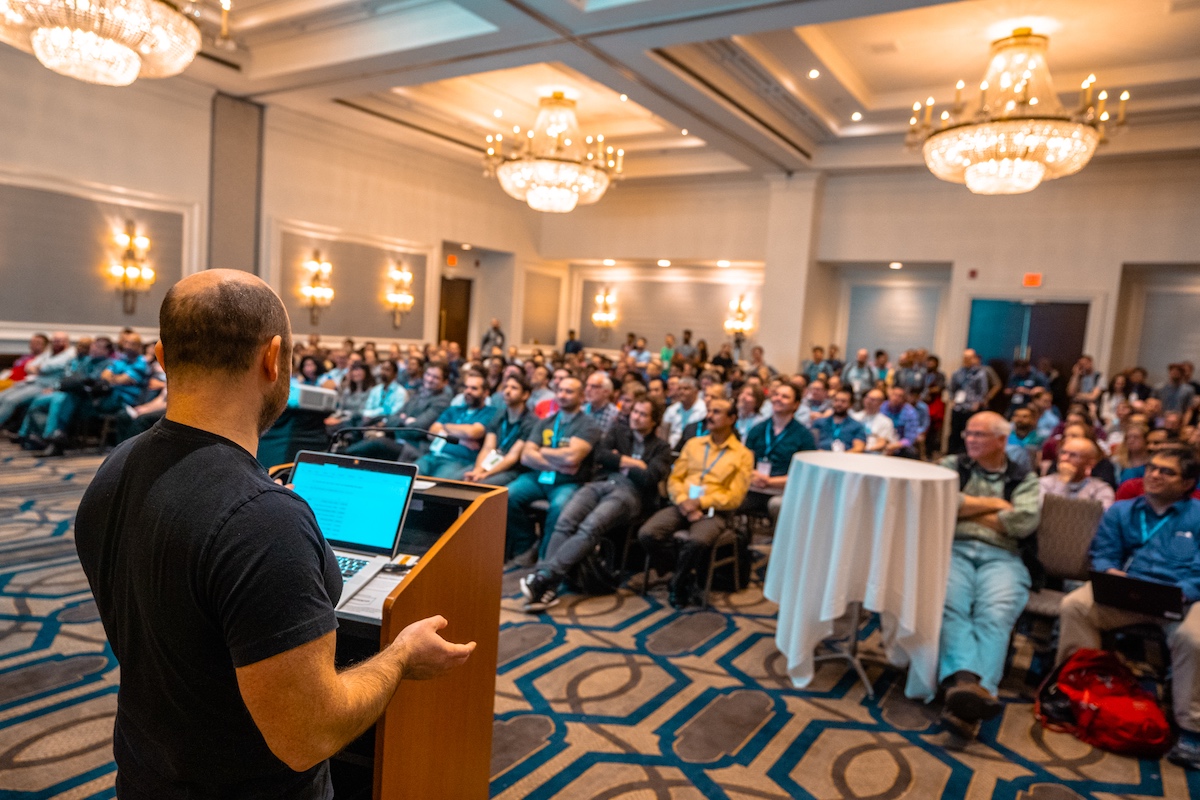This post was featured in Technically Philly on May 23, 2019. It was co-written by Chariot Solutions’ CMO Tracey Welson-Rossman, and Comcast’s Audrey Troutt.
If you happened to be looking for your software development team on April 23 or 24, you may have noticed it was very quiet in that part of your office.
That’s because more than 550 Philadelphia-area software developers and engineers were attending the Philly Emerging Technologies for the Enterprise (ETE) conference. This conference has been taking place for nearly 15 years, bringing together committers, practitioners, and founders of open source and emerging tech tools and technologies. It is one of the largest conferences for developers in the Mid-Atlantic and an important learning space for the region’s technology workforce.
Philly ETE is always deep technically, but for technologists — and those who work with technologists — it offers a vital window into the latest trends in enterprise technology.

At the very first ETE in 2005, the hot topic, besides what was new in Java, was open source software licensing. While it may seem quaint now, at the time many companies weren’t sure if they wanted free software in their environments, and it was up to developers to make the case for the flexibility and velocity that open source enabled. Understanding what open source software could do from the developers’ perspective was very important in changing the conversation around software development.
This year’s conference kicked off with an inspiring keynote from Jessica Kerr at Atomist about the concept of “symmathesy,” a term coined by writer and filmmaker Nora Bateson. Throughout history, from Renaissance art and music, through the discovery of the elements, to innovators in the software development like the Gang of Four or the Agile Manifesto creators, there was always a community behind each innovation. Groups of thinkers learning together and challenging each other is what has historically helped us leap forward creatively and scientifically. Symmathesy attempts to describe this sort of collective learning.
